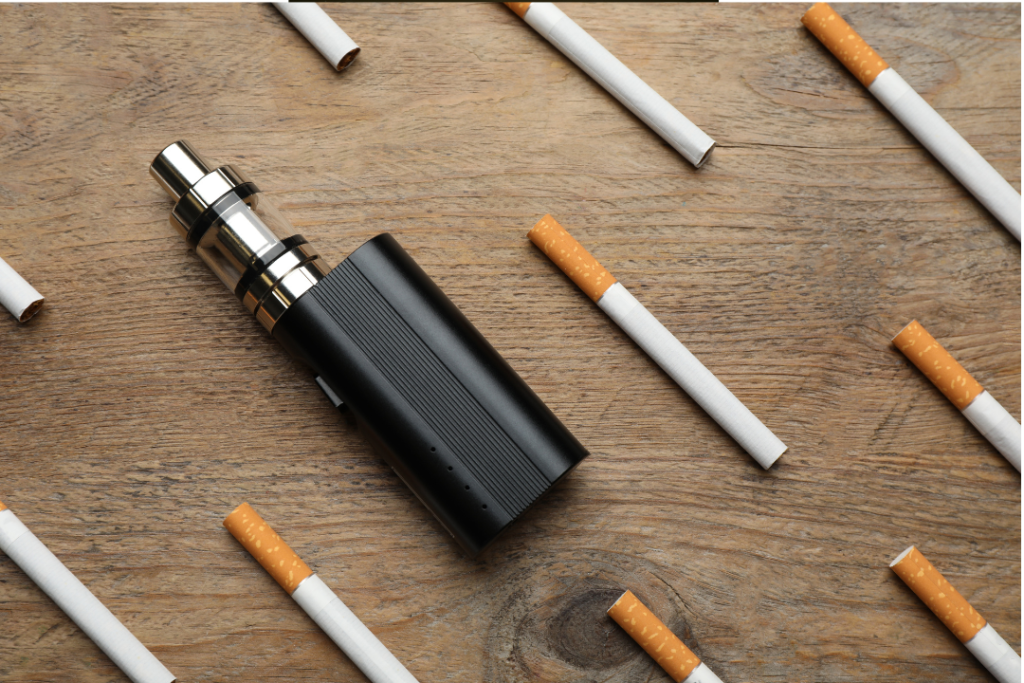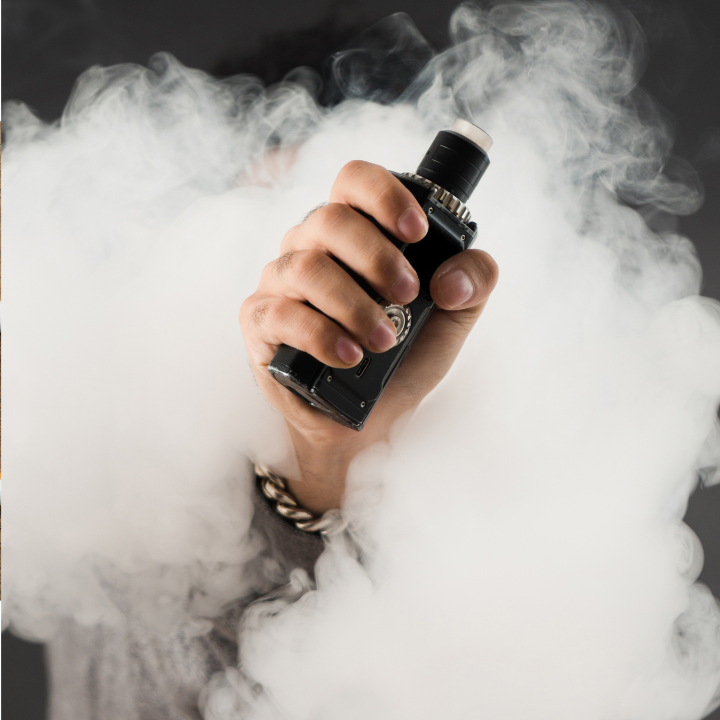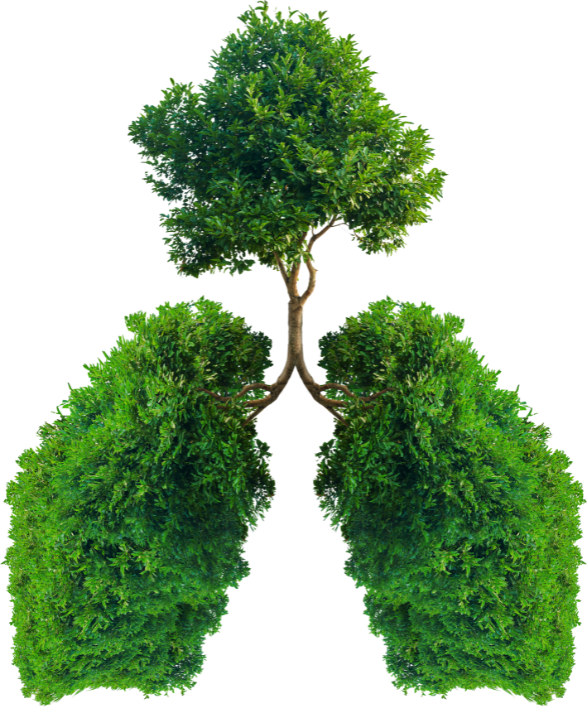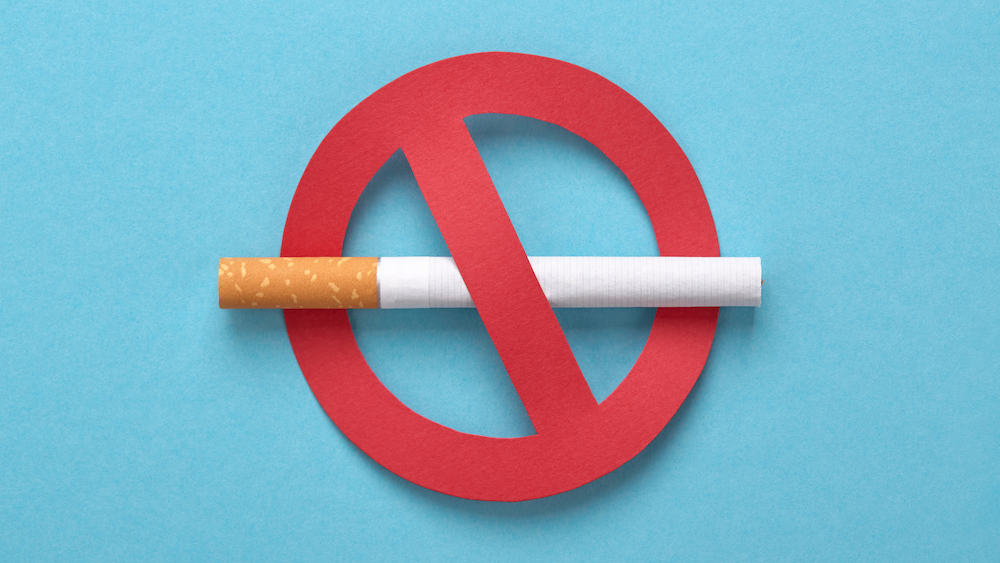Do you or someone you know smoke? Do you know why? It’s not a question many smokers consider, but it can help them on the road to quitting, especially when weighed against the reasons why they shouldn’t smoke. That’s what this article is all about. Smoking impacts almost every aspect of your health, and quitting can make you feel better within days. So, keep reading to learn the health consequences of smoking, a timeline of what happens to your body after you quit, and why alternatives like vapes likely aren’t any better.
Plus, we’ll discuss how CBD can help “turn off” your nicotine cravings.
But first…
Why Does Anyone Smoke?

Globally, nearly 1 in 4 adults smokes tobacco. Though it may seem like the popularity of smoking peaked in the mid-1900s and has been tapering off in the 2000s, tobacco has been around for thousands of years, with humans chewing and smoking it for as long as we’ve been recording history. Meaning people have been trying to kick the habit for millenia.
Thousands of years ago, tobacco was mostly used in cultural or religious ceremonies, but there are indications that it was also used socially. In more modern times, it wasn’t until the 1500s that Europeans took an interest in tobacco, and it took until 1700 for smoking tobacco to be commonplace across England and Europe. However, by then, the ill health effects were already being suspected.
The earliest known record of smoking being linked to illness was in 1602 when an English author published an essay comparing the common illnesses of chimney sweepers with regular smokers. By the late 1700s, physicians in both Europe and the US were linking smoking to different types of cancers. In the 1920s, medical reports were released, linking smoking to lung cancer, though the media refused to distribute these findings in order to protect the tobacco industry. But a major series of medical reports in the 1950s and 1960s was too hard to ignore. Since then, more reports have come out, and smoking has been on the decline.
This downward trend is great news once you learn what’s in modern cigarettes…
What’s in a Cigarette?
The main ingredient in cigarettes is tobacco, a plant that contains an addictive substance called nicotine. This is the main reason people smoke cigarettes, even though just nicotine itself has been shown to harm the heart, lungs, stomach, immune system, and more, all while increasing cancer risk. [1]
But when you smoke a regular cigarette, that’s the least of your worries.
Regular cigarettes, called combustible cigarettes, contain tobacco, added chemicals, a filter, and a paper covering. According to the American Cancer Society, when smoked, people expose themselves to over 7,000 different chemicals. Those around the smoker are also exposed to these chemicals through secondhand smoke.
When found in other products, many of these chemicals will come with a warning label to inform you that there is poison inside the packaging.
Here are a few examples:

☠️ Acetone – Found in nail polish remover.
☠️ Acetic acid – An ingredient in hair dye.
☠️ Ammonia – A common household cleaner.
☠️ Arsenic – Used in rat poison.
☠️ Benzene – Found in rubber cement and gasoline.
☠️ Butane – Used in lighter fluid.
☠️ Cadmium – An active component in battery acid.
☠️ Carbon monoxide – Released in car exhaust fumes.
☠️ Formaldehyde – This is embalming fluid.
☠️ Hexamine – Found in barbecue lighter fluid.
☠️ Lead – Used in batteries.
☠️ Naphthalene – An ingredient in mothballs.
☠️ Methanol – A main component in rocket fuel.
☠️ Nicotine – Used as an insecticide.
☠️ Tar – Material for paving roads.
☠️ Toluene – Used to manufacture paint.
Of course, the presence of an ingredient in, say, paint doesn’t necessarily mean that that ingredient is inherently bad for you. For example, water is in paint. But in the list above, all of these ingredients are harmful to your health on their own.
Even if you smoke “light,” “hand-rolled,” or “natural” cigarettes, there are no studies to indicate that these are any better, with some research showing they actually increase certain types of cancers, even if they are lowering others. These terms are nothing more than marketing tactics.
The fact of the matter is that there is no healthy way to smoke. If you smoke or you’re around someone who regularly smokes, you’re probably now thinking that it’s time to quit.
But this is easier said than done. 68% of smokers report that they would like to quit, with over 55% of them saying they’ve tried at least once in the past year. And, in 2018, only 7.5% of adult smokers had quit within the last year. It’s not all bad, though. Because many people are successfully quitting. In 2018, 61.7% of adult smokers who had ever smoked had quit. [2]
There are many quitting gimmicks and tactics, but research indicates that quitting “cold turkey,” meaning stopping abruptly, leads to higher rates of cessation. Quitting aids can come in many forms, from nicotine patches, suckers, and chewing gum and these can certainly help. [3]
Below, we’ll cover how CBD can help you kick the habit by naturally curbing nicotine cravings.
Before that, knowing just how harmful smoking cigarettes is to your body is an important factor in helping you quit for good.
How Smoking Affects Your Body
If you’re taking in tobacco – whether that’s through smoking or chewing – it’s going to have negative health effects on your body. Many of these effects are long-term, like increasing your risk of cardiovascular disease and cancer, while others can happen almost immediately.
Regular smoking has the following health effects on your body:

❌ Increases inflammation all throughout the body.
❌ Weakens your immune system.
❌ Increases the risk of cancer almost anywhere in the body.
❌ Makes you feel fatigued, irritable, and anxious until you have another cigarette.
❌ Damages your optic nerve and vision.
❌ Damages the lungs.
❌ Increases lung cancer risk by 20 times.
❌ Increases the risk of several lung conditions, including asthma, COPD, and chronic bronchitis.
❌ Causes fertility issues.
❌ Damages the heart, arteries, and blood vessels.
❌ Greatly increases the chances of cardiovascular disease.
❌ Causes the skin to age prematurely due to damaged skin proteins.
❌ Increases risk of hair loss.
❌ Makes nails more brittle and fragile.
❌ Damages the digestive system.
❌ Increases risk of type 2 diabetes.
❌ Harms your gums and makes them more prone to bacterial infections.
❌ Reduces bone density and increases the risk of osteoporosis.
As you can see, smoking cigarettes takes a severe toll on your health, greatly increasing the risk of many diseases, and lowering your quality of life.
Quitting smoking can help you live a longer, happier life. And there’s no time like the present. But before we get into how CBD can help you or a loved one finally kick the habit, let’s look at another alternative many people have opted for instead of cigarettes, even though they could be just as harmful.

What is Vaping?
A vape – or e-cigarette – is a battery-powered device that simulates smoking. The device contains a cartridge with a liquid or dry material – made up of nicotine, flavoring, and typically about 30 other chemicals – which is inhaled when the mouthpiece is sucked on, activating a heating element. This turns the liquid into a vapor that can then be inhaled and crossed into the bloodstream via the lungs.
While vaping seems like a brand-new concept, the first patent for such an idea was filed in 1927. Attempts at commercialization occurred several times throughout the 1900s, including once in 1979, which is when the term “vape” originated, but these attempts repeatedly failed.
The first successful attempt happened in 2003 by a pharmacist and inventor in China. Following that, similar products were launched in Europe and the United States three years later. But by 2008, governments and the World Health Organization (WHO) were already blowing the whistle, claiming that vapes, or “e-cigarettes,” are just as harmful as cigarettes.
A flurry of regulations and outright bans happened in the following years, all of them citing health concerns. So, why are they so common if public health officials acted fast to prevent the public from using these?
Well, in retaliation to these laws, the tobacco industry fought hard to reverse and prevent legislation, allowing them to sell and market vapes. And they’ve been doing a good job. By 2011, vapes were marketed as a means to quit cigarettes – a healthier alternative to getting your nicotine.
Since then, tobacco companies and governments have been battling it out, with conflicting information everywhere, from Public Health England claiming an independent review of theirs found e-cigarettes to be significantly less harmful than cigarettes to studies linking vaping to asthma and chronic obstructive pulmonary disease (COPD). [4]
Once again, consumers are left on their own, with the tobacco industry asking for our trust. But, unlike the 1920s, we now have the internet and can find some answers by ourselves.
How Vaping Affects Your Body
In the summer of 2019, there was a huge surge of hospitalizations across America concerning a host of respiratory symptoms, such as shortness of breath, cough, and chest pain. The Centers for Disease Control and Prevention (CDC) investigated and discovered that all of the patients shared one thing in common: they vaped.
Since then, the condition has been named “e-cigarette, or vaping, product use associated (with) lung injury,” or EVALI. By February 2020, 2,800 hospitalizations and 68 deaths were associated with the condition. Thankfully, cases have dropped, and the culprit is suspected to be vitamin E added to the vaping formulas that were used by these patients. While taking vitamin E orally is completely safe (and necessary), inhaling it can irritate and even damage the lungs.
But it shows what public health officials were so afraid of: we know nothing about vaping or how inhaling random ingredients can affect the body.

Other common ingredients in vape formulas considered to be much more harmful include:
☠️ Nano-sized metals – Very high levels of metals such as nickel, chromium, lead, zinc, and copper have been detected in e-cigarette vapors, potentially coming from the vape itself. Like vitamin E, it’s hard to know what even otherwise safe metals like zinc will do to the lungs in the short and long term when inhaled.
☠️ Diacetyl – This food additive, used to deepen e-cigarette flavors, is known to damage small passageways in the lungs. It’s associated with “popcorn lung.”
☠️ Formaldehyde – This toxic chemical can cause lung disease and contribute to heart disease.
☠️ Acrolein – Most often used as a weed killer, this chemical can also damage the lungs.
Through ingredients like the above and other unknowns, vaping is associated with health conditions such as:
❌ Bronchiolitis obliterans (BO), also known as “popcorn lung,” is a condition that permanently damages the small airways of the lungs.
❌ Vaping-related lipoid pneumonia is a type of pneumonia caused by the oily substances found in vape formulas building up and triggering an inflammatory response in the lungs.
❌ Primary spontaneous pneumothorax (collapsed lung) can be caused by rupturing otherwise benign blisters within the lungs, which tear from irritation caused by vaping, creating a hole in the lungs.
❌ Most doctors believe that vaping can increase the risk of lung cancer since most contain nicotine.
If you’re vaping – whether it was to stop smoking or you picked it up on your own – it may be time to call it quits. After all, even if it’s safer than smoking cigarettes, that’s not a very high bar to set for you and your health, considering how harmful cigarettes are for you.
But here’s something confusing – the answer to what can help you kick the habit is actually an ingredient many people vape: CBD.
What is CBD?
Cannabinol (CBD) is one of the most studied cannabinoids within the cannabis sativa plant. Unlike tetrahydrocannabinol (THC), CBD doesn’t cause any psychoactive effects or make you get “high.”
Through working with the endocannabinoid system (ECS) – a vast network of chemicals and receptors within your body responsible for several functions – along with other mechanisms, CBD has been found to offer several benefits.
Benefits of CBD include:

✅ Reducing inflammation – Inflammation is a natural response to injury or infection, but it can become chronic if not treated or if the body has a poor response to the inflammation. CBD has anti-inflammatory properties that can help reduce chronic inflammation. Research has shown that CBD can promote a healthy inflammatory response, specifically in those with arthritis. [5]
✅ Easing pain – CBD is a natural pain reliever. It can be used to ease both acute and chronic pain, including arthritis pain. Research has indicated that it can be a healthier alternative for those looking for relief. [6]
✅ Improving sleep quality – CBD can help improve sleep quality by reducing anxiety and improving sleep cycles. One study found that daily CBD intake over a month increased sleep scores in 67% of participants. [7]
✅ Enhancing cognitive function – CBD has been shown to improve cognitive function and memory retention in older adults. One study found that CBD improved brain connectivity and boosted brain activity in both healthy individuals as well as those with brain disorders. [8]
✅ Boosting the immune system – CBD can help boost the immune system and protect against infection. Research has shown that the compound helps regulate the immune system for a more robust and targeted response. [9]
✅ Reducing anxiety – CBD can reduce anxiety, which can improve quality of life. In the sleep study above, researchers also looked for markers of anxiety in the participants, finding a decrease in nearly 80% of participants in just a month’s time! [7]
How CBD Can Help You Quit Smoking
Another benefit of CBD that’s been coming up is how it can help people quit smoking. This comes after an interesting study in 2013. Researchers wanted to test how taking a daily dose of CBD affected smokers’ habits. They found that those taking the CBD smoked 40% fewer cigarettes, with some even maintaining this change after the study. [10]
Why did this happen?
An answer came out of Washington State University in 2023 when researchers discovered that CBD inhibits the production of certain enzymes. What’s the big deal? Well, these enzymes are responsible for metabolizing nicotine, with just one of them – CYP2A6 – being responsible for over 70% of nicotine metabolization. [11]
In your body, these enzymes are begging for nicotine. If you take a substance like CBD that lowers the production of these enzymes, then cigarette cravings won’t be nearly as strong. This explains why simply taking CBD cuts the urge for a cigarette by 40%.
Other ways CBD can help people quit smoking include:
Reducing inflammation – When you smoke, your body is in a constant stressful inflammatory state. But CBD is known for reducing inflammation, which can heal the lungs and make quitting easier.
Easing stress and anxiety – Many people say they smoke to relax. Thankfully, CBD can help you do that without lighting up.
If people are vaping to quit smoking because they think it may be healthier, then choosing CBD to quit smoking is WAY healthier. Not only does it not come with any harmful side effects, but it can actually benefit your health in the ways listed above.
Though regulations vary, CBD is legal in almost every state, and it is not addictive.
What Happens To Your Body When You Quit Smoking: A Timeline
When you quit smoking, the health effects are immediate. After each cigarette you smoke, your body attempts to start healing itself. But its work is reversed once you have another smoke. However, if you don’t smoke again, your body undergoes some incredible changes.
Here’s a timeline of what happens to your body when you quit smoking:

⏱️ 1 hour: Blood pressure and heart rate normalize. Circulation improves.
⏱️ 12 hours: The body cleanses itself of the influx of carbon monoxide and oxygen levels increase.
⏱️ 1 day: The risk of heart attack begins to decrease. With the increase in blood oxygen levels, exercise and daily tasks become easier.
⏱️ 2 days: Increased sense of smell and taste as nerves heal.
⏱️ 3 days: It may feel easier to breathe as bronchial tubes relax. Energy levels increase.
⏱️ 2 weeks: Circulation and lung function improves.
⏱️ 1 month: Coughing and shortness of breath decrease. Hair-like structures in the lungs called cilia, which move mucus out of the lungs, regain normal function, clearing the lungs and reducing the risk of infection.
⏱️ 3-9 months: Lung function increases by 10%, improving coughing, wheezing, or breathing problems.
⏱️ 1 year: The risk of heart attack and heart disease has been cut in half.
⏱️ 5 years: The risk of mouth, throat, esophageal, and bladder cancer is reduced by half.
⏱️ 10 years: The risk of developing and dying from lung cancer is reduced by half. The risks of other cancers decrease as well.
⏱️ 15 years: The risk of heart disease becomes close to that of a person who does not smoke.
It’s Time To Quit
We’re wondering if you’ve thought more about the why when it comes to smoking. We feel like we’ve certainly provided a lot of good reasons not to smoke. Mainly, you will live a happier, healthier life. As each year passes as a non-smoker who has cut the habit, the risk of disease also drops. Not only that, but your quality of life improves as lung function, energy levels, and other factors become normal.
CBD can help you quit for good by reducing your nicotine cravings. Imagine how much easier it would be to quit if you craved a cigarette 40% less than you do now.






